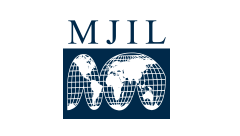Abstract
Because the existing body of international environmental law has, in part, emerged on the basis of "soft" norms, it provides a good field for observing the general sociological and juridical phenomenon termed "soft" law. The 1972 Stockholm Declaration adopted by the UN Conference on the Human Environment, for example, constitutes the normative program for the world community 'in this field. Although, from a formal point of view, the Declaration is only a nonbinding resolution, many of its "principles," particularly Principle 21, have been relied upon by governments to justify their legal rights and duties. The subsequent State practice has been, no doubt, influenced by such provisions. It is in this context and with the benefit of these introductory remarks that we shall briefly and successively examine the creation (I), the forms and content (II), and the legal effects (III) of "soft" law in the field of international environmental law.
Recommended Citation
Pierre-Marie Dupuy,
Soft Law and the International Law of the Environment,
12
Mich. J. Int'l L.
420
(1991).
Available at:
https://repository.law.umich.edu/mjil/vol12/iss2/4

